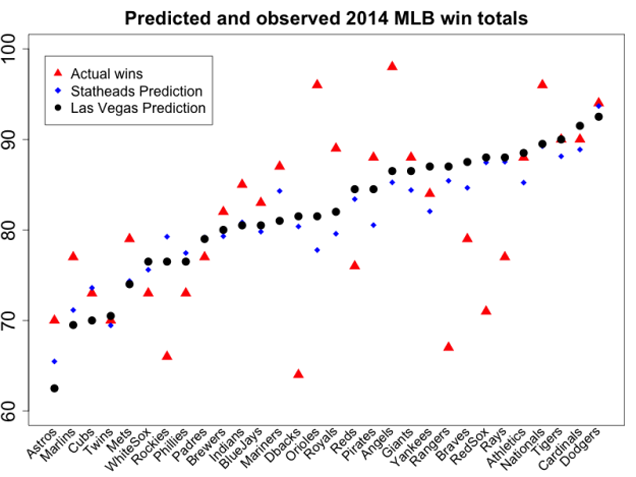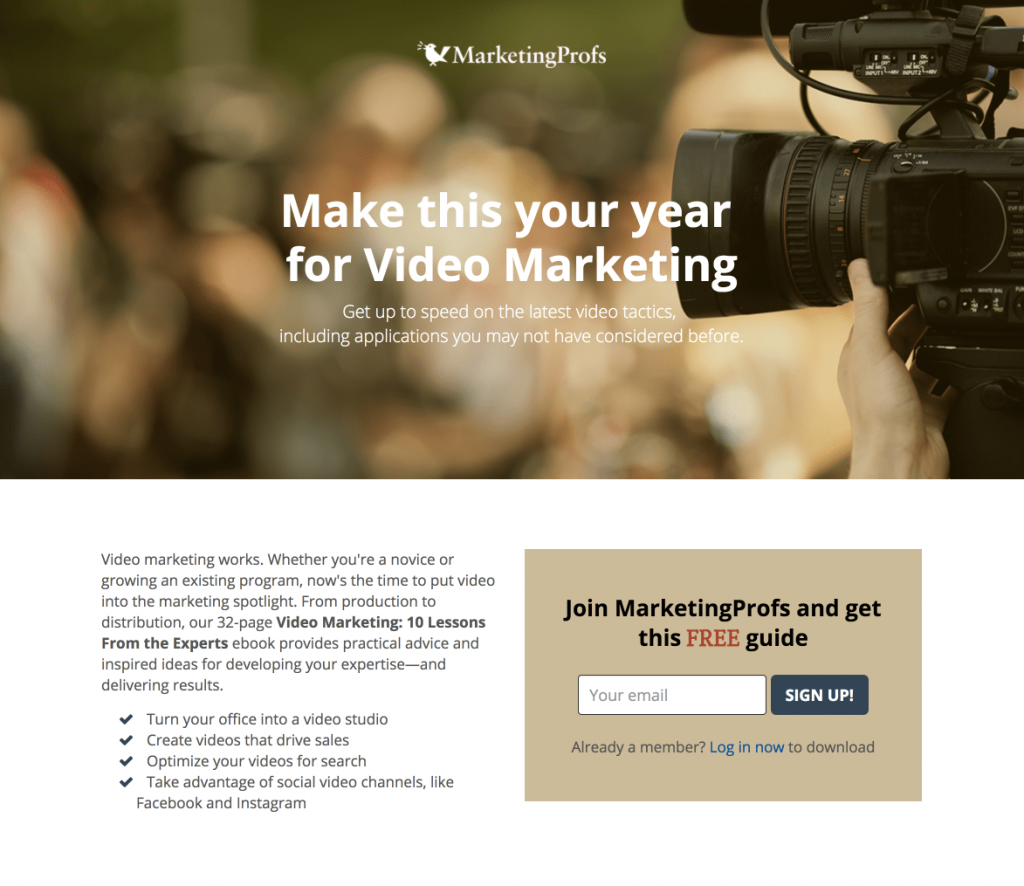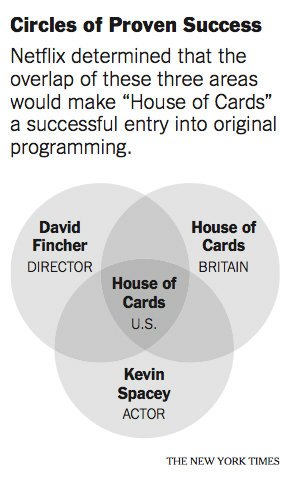According to Webopedia, “Predictive analytics is the practice of extracting information from existing data sets to determine patterns and predict outcomes and trends.” Sounds complicated — because it is. Anytime you use the past to discern what is going to happen in the future; you’re taking a risk.
However, without some form of predictive analytics, it’s much tougher to accomplish your objective, whatever it may be. For example, in baseball, the statistical method known as Sabermetrics is often used as a predictive analytics tool.

By analyzing advanced, non-traditional statistics or metrics, baseball managers make lineup decisions (e.g., what relief pitcher to use in what situation) and the front office makes personnel decisions (which young players to draft), all based on what their analytics models predict is most likely to happen.
In another example, Netflix uses predictive analytics to help determine which proposed programs they will produce for their “Netflix Original Programming” roster. The decision to produce the popular series “House of Cards,” for example, was decided after an analysis of the star, the director and the British version of the show.
Why predictive analytics?
When marketing departments utilize predictive analytics, they are better at identifying potential customers. Once customers are identified and successfully closed, a cornucopia of other products can be marketed to them based on their buying patterns.
Again, in concert with big data, predictive analytics can indicate which products to cross-sell to which consumers. For example, if a man purchases an Armani suit for $4,000, he would be a better target for a BMW than a Honda Civic. Even intra-product cross-selling and upselling are offshoots of successful predictive analytics efforts. The highly successful Dollar Shave Club combines an attractive name with the effort to upsell, positioning premium products next to the “dollar” products on its website.
These are straightforward examples of predictive analytics, or predictive intelligence, that come into play in everyday life. With the advent of big data, however, predictive analytics has taken a much more sophisticated turn. Advanced computer algorithms (a set of computer instructions to accomplish a given task) have made the science of prediction through data more accurate and more far-reaching than ever before, and this trend shows no sign of slowing down. Marketers who get behind the curve will have very difficult time playing catch up.
Predictive analytics in the marketing realm
How does all this relate to marketing, and how should marketers take advantage of predictive analytics? First and foremost, any process or tool that helps marketers discern the buying habits of consumers can be a boon to their business because if you can “decode” the past buying habits, you can project the future buying habits, and make decisions based on those projections. Predictive analytics helps ensure that these predictions are accurate.
When a moviegoer purchases a ticket, for example, the transaction is captured by the ticket seller’s computer system and entered into its database. The predictive analytics algorithm can then instruct the computer to send an email to the customer whenever a new play is about to open. Taking it a step further, the algorithm can define the particular genre (musical, mystery, comedy for example) with which to target the ticket buyer.
For the marketing department, the purchase information can be mined and be the basis for ticket promotions, advertising campaigns, game day giveaways, etc.
Let’s look at some of the things a marketer can do when all available data is mined, and predictive analytics is applied:
- Analyze and forecast seasonal customer behavior. This is especially true for online sales, as the most successful ecommerce sites are those that highlight the products that consumers are going to want at any given time.

- Second, target the most profitable products to customers most likely to buy them. It does no good to generate an email or pop-up ad for a Mercedes-Benz to a 13-year-old. Conversely, targeting the affluent customer for high-end products is central to effective marketing.
- Next, conduct “what if” scenarios for customer buying habits (for example, if supplies of product A run out, who is likely to buy product B?). On the surface, this may seem like a supply chain issue, but the fact is, more sales will be made if marketing can determine a priority list of items to have in stock based on what the predictive algorithms indicate.
- Then develop more effective marketing and advertising strategies. Not just by targeting the right audience, but by targeting them with messages, images, and themes that will attract them to your product or service.
- Fifth, learn and employ the best strategies for winning repeat business. Predictive intelligence can inform marketing which consumers are most likely to be repeat customers. Budgets are getting tighter and tighter. Marketing needs to allocate their resources to focus on targets that provide the highest ROI, and nothing provides ROI like repeat customers. In the words of business guru Edwards Deming “The result of long-term relationships is better and better quality and lower and lower costs.”
- Finally, prioritize customers. As an adjunct to the above, marketers need to prioritize customers based on a number of factors, not the least of which is the likelihood that they will become repeat customers. Other factors include but are not limited to, which customers buy the highest-margin products, which customers cost the least to attract and which customers are most likely to initiate returns.
Tools to enable predictive analytics
Fortunately for business, there is no need to employ a cadre of computer programmers to devise predictive analytics algorithms. There are plenty of tools to accomplish the analytic tasks required to get the job done.
Some of the principal players in predictive analytics are IBM, SAP, and Oracle, but for those companies that are not ready for expensive and complex “enterprise class” solutions, there are alternatives such as Marketo, Tableau, GoodData and a host of others. The major difference between the enterprise class tools and best of breed smaller vendors is not in sophistication or functionality, but that SAP and Oracle-centric companies tend to favor vendor uniformity, while IBM database users feel that there is an advantage to using IBM analytical tools.
Conversion optimization – the landing page
Any online marketing campaign or any ecommerce presence is primarily judged on one criterion: the number of conversions. Great campaigns, great promotions, even great products are only great if they generate sales.
In digital marketing, conversion is everything. For that reason, every online advertising campaign needs a landing page, and the landing page must be professionally designed to generate leads, attractive to the eye, and user-friendly.
Online users have all experienced the frustration of landing pages that didn’t provide the information they need, are not focused on one action, are just plain unattractive, and simply are not well-designed. For the online marketer, whose lifeline is conversions, the lack of a landing page or a poor landing page, is poison.
An example of a good landing page can be found here. The MarketingProfs page is clean, attractive, easy to read and navigate with a simple one field form.

Fortunately, Instapage is the most designer-friendly landing page platform that enables marketers to create beautiful high-converting landing pages at scale quickly. With advanced functionality such as edge measurement and axis lock, a CSS editor, coupled with more than 200 templates, you won’t find a more flexible, user-friendly, and customizable landing page solution anywhere.
Predictive analytics: Here to stay and growing more important
Predictive analysis is part and parcel of today’s online advertising. From simple analytics, like cross-selling based on an online purchase, to ultra-sophisticated applications, like trying to anticipate the purchasing habits of various consumer segments, predictive analytics is becoming the bedrock upon which online marketing and advertising are built. As computer processing power increases and data storage becomes cheaper and cheaper, there is no end in sight for what predictive analytics will be able to accomplish.
In the old brick-and-mortar-only days, marketing was just a matter of making sure that the department store had enough Christmas items during the Christmas season and that the local newspaper had the right coupons and promotional advertising. Today, the brick and mortar channel is being challenged by online shopping, and shopping online via PC is being rivaled by the smartphone.
According to Statista, In 2023, retail e-commerce sales amounted to approximately 6.3 trillion U.S. dollars worldwide. This figure is forecast to grow by 56 percent over the next years, reaching about 8.1 trillion dollars by 2026. This is why, today’s retailer must devote adequate resources to online advertising and sales, and to do that, the merchant needs the following:
- A marketing team with a thorough understanding of the online purchasing process. For smaller firms, this might require the use of outside consultants.
- Focus on predictive analytics that can lead to a greater understanding of consumer habits and efficient resource allocation as well as impactful targeting of advertising.
- The creativity to exploit those habits by acting on the conclusions provided by the predictive technologies.
- The software tools to mine data from all available sources and analyze it, and the IT resources to administer those tools and to advise on the tool selection if necessary.
- A thorough understanding of the critical role landing pages play in conversion optimization and the savvy to choose the best landing page, provider.
The future
Marketing has become a digital enterprise, and predictive analytics is one of its principal tools. Analyzing consumer habits once took weeks and weeks of analyzing spreadsheets, but today it’s done in real time. The implication is clear: where we’ve been and where we are going are intertwined like never before.
As technology moves forward, the ability to predict consumer habits and, for that matter, everyone’s habits, will pose several ethical and legal challenges. Even now, marketers must be cautious to make sure that their marketing efforts do not cross the line between marketing and invasion of privacy. Once again, predictive analytics will come into play, but more likely as a solution to the problem than the problem itself.
Sign up for an Instapage Enterprise demo today.

See the Instapage Enterprise Plan in Action.
Demo includes AdMap™, Personalization, AMP,
Global Blocks, heatmaps & more.


